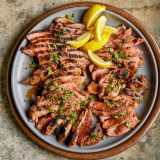Pakistani cooking isn’t defined by its spices, even if several dozen often are at play in a dish, Marium Abrar explained in a tone that invited no dispute. Behind her, six rustically mechanized wooden pistons rotated inside buckets of mustard seeds, each pass grinding them further to a pulp and releasing their vibrant—and nose-tingling—yellow oil to drip into pails below.
Rather, Pakistani cooking really is about how all those spices are wedded to the real star of the table—meat. “The way we cook, it is about bringing them together, about balance,” says Abrar, owner of Daali Earthfoods, a spice company on the outskirts of Lahore. “We are a meat-centric nation. If I served my family a meal with no meat, I would never see them again. My own mother would kill me. My own father, if he sat at a table with no meat, he would just get up and leave.”
Which seems a bit harsh. Until you start eating your way around the city and realize how wonderfully cooks here strike that balance, use those many spices to highlight—but never hide—rich cuts of beef and lamb. Like chapli kebabs, thin patties of meat crusted with crushed coriander and stained red with Kashmiri chili powder (plus a dozen or more other spices). Or biryani, where spices are layered with chicken at the beginning, middle and end of cooking to extract just the right nuances.
Abrar’s lesson served me well when I later sat with Muneeze Khalid, owner of Bagh Restaurant, an airy eatery dropped in the middle of a lush park. As an array of dishes rolled out of the kitchen, each played on a now-familiar theme—meat, meat, meat! But always lightened, brightened and heightened by spices added so generously.
The standout was the dish I expected the least from—grilled mutton chops. Never really been my thing. They arrived propped above a tabletop hibachi-like grill filled with coals. Truthfully, it was hard to see the meat beneath an almost caramelized thick coating—clearly something pureed, though I wasn’t sure what—and studded with coarsely crushed spices.
But the taste was something that simply stopped me. So much flavor, so much tangy warmth, but little heat. And that allowed the richness of the meat to shine. And that meat! Ridiculously tender, the flavor of that coating reaching deep.
A few days later, I returned to learn how the chops are prepared. Cook Naveed Gill led me to a hut behind the restaurant. There, the heat was intense, long and shallow beds of coals glowing red, egged on by massive fans blowing air into them, fueling waves of heat and smoke that made it obvious why this cooking was banished to the outdoors.
Gill first cut deep slashes into the meat, a trick we’ve seen elsewhere that helps flavor penetrate where traditional marinades typically cannot.
He then slathered them with a blend of yogurt, lemon juice and—surprisingly—papaya puree, all of it studded with crushed cumin, coriander and carom, a spice also called ajwain, a relative of caraway.
A few hours of marinating. A few moments over that intense heat. The results were fantastic. The spices transformed those chops. But so did that blend of yogurt, citrus and papaya, a combination we’d later learn is especially adept at tenderizing meat and driving flavor to its core—a feat most marinades falter at.
It’s a combination I’m confident would keep Abrar’s family firmly seated at the table.
Pakistani Grilled Marinated Lamb
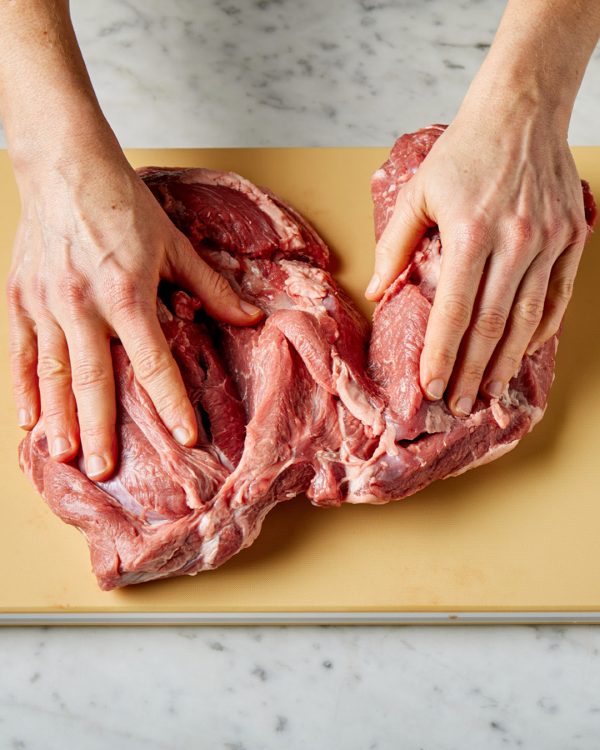
1. Open up and flatten the meat by using your hands to gently pull apart the muscles along the natural seams.
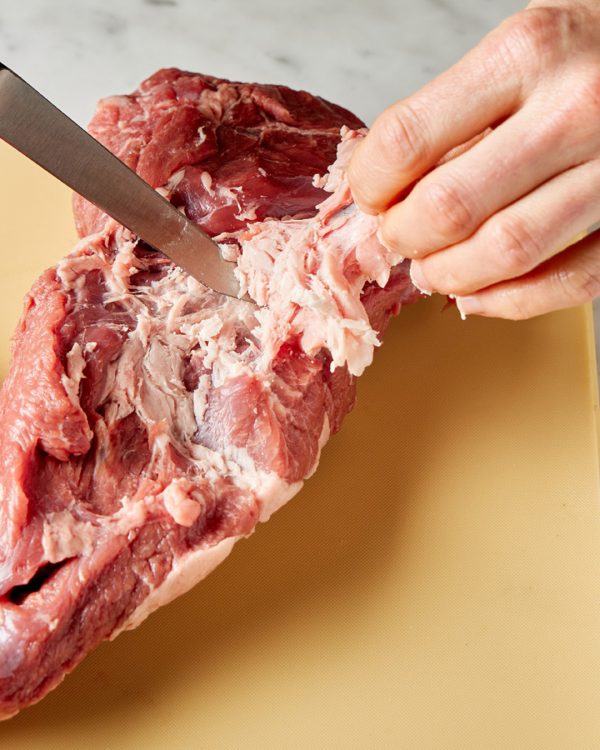
2. Holding the meat flat, use a sharp paring knife to trim away and discard any large pieces of fat.
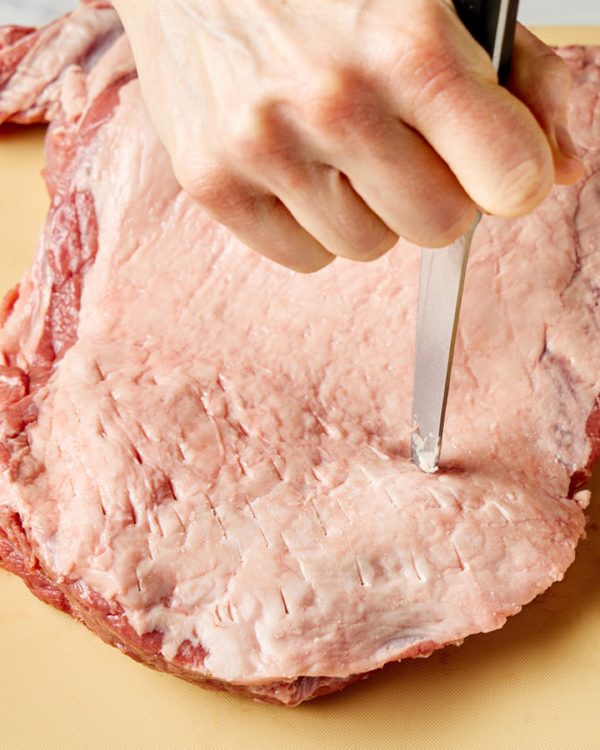
3. Using the tip of the knife, make small, deep cuts all over the meat, then flip and repeat on the other side.
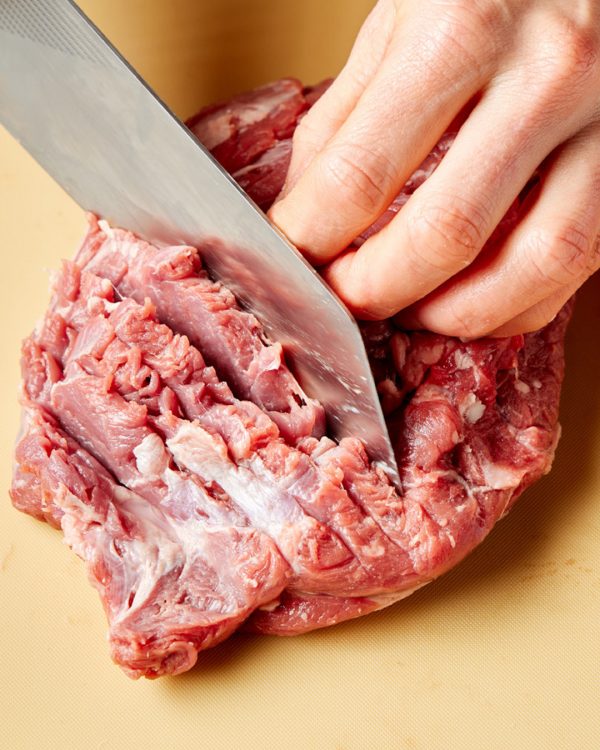
4. Where the meat is thickest, use a sharp knife to cut shallow slashes into the surface.
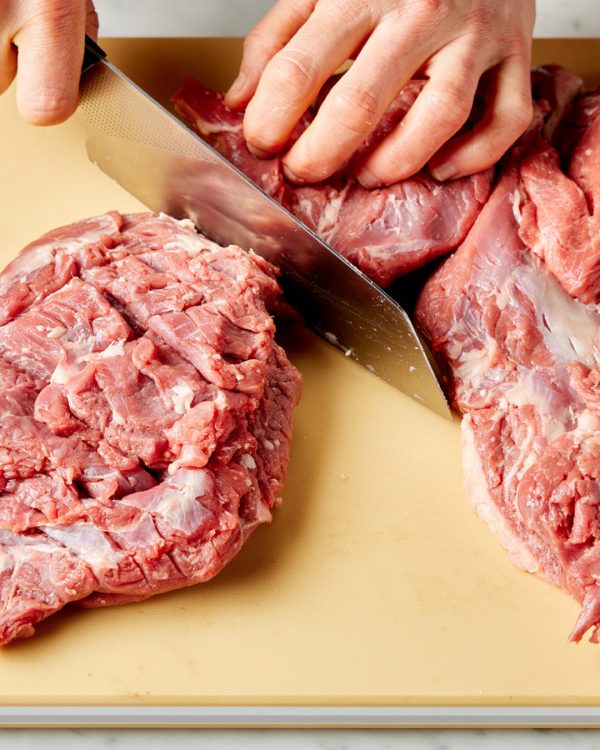
5. Cut the leg into 3 or 4 pieces of roughly even size; try to cut along the natural seams of the meat.
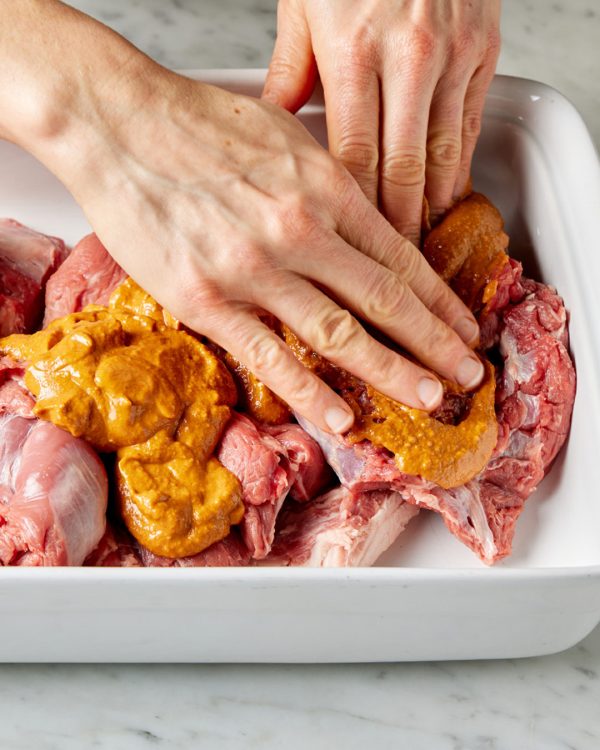
6. Place the pieces in the dish and rub the marinade all over the meat and into the cuts. Cover and refrigerate.
The Secret to Marinades That Actually Work
Most marinades fail to flavor or tenderize meat, so we rarely use them. The seasonings’ flavor molecules are too large to penetrate. The exception is salt, able to penetrate into the meat and draw moisture with it.
But we recently learned of several other ingredients that work well enough to make marinating worthwhile—acids, dairy and certain fruits with enzymatic properties, all of which are at play in our Pakistani grilled lamb.
Fruits such as papaya contain proteases, enzymes that break down protein. Papaya’s protease, papain, dissolves connective tissue and tenderizes meat. The enzyme also is more active in an acidic environment. In our recipe, lemon juice and mildly acidic yogurt enhance the papaya’s effect. Additionally, the yogurt’s calcium further activates papain, creating a particularly effective tenderizer.
Even without papaya, the yogurt tenderizes. Acids disrupt peptide bonds, breaking down proteins. And yogurt—which contains lactic acid—is sufficiently acidic to have this effect. Lemon juice is even more acidic, making its effects more pronounced.
In our lamb recipe, all three are at play—along with salt. We found that eight hours (or up to 24) was perfect to deliver deep seasoning and supple texture (but more than 24 hours left it mushy). We also maximized the effect by cutting into the meat before adding it to the marinade, ensuring it penetrated deeply.
